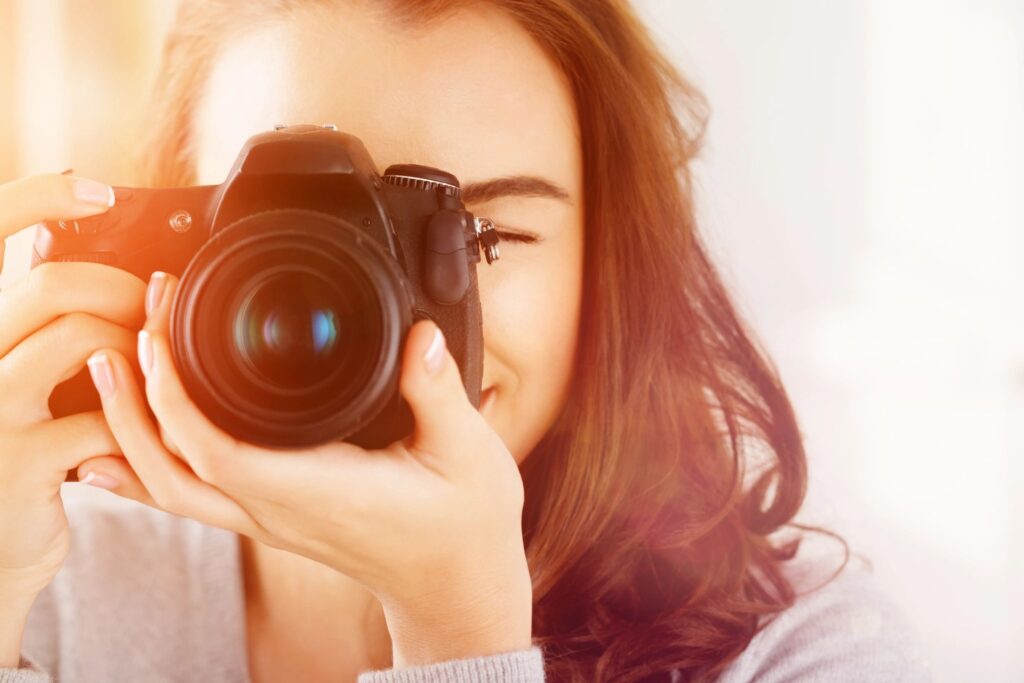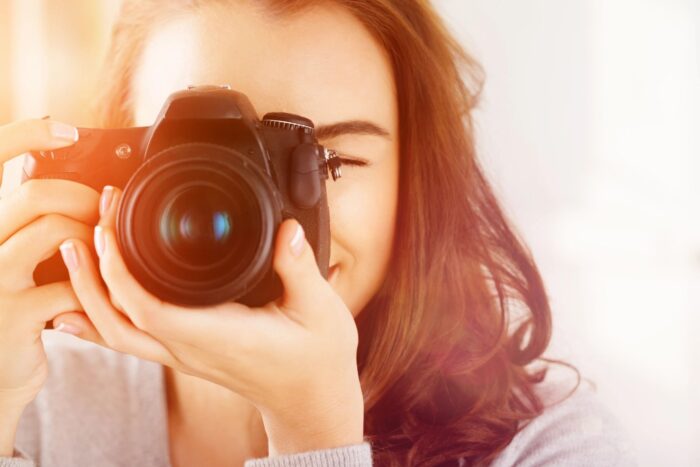
Types of Materials for Photography Backdrops
A photography backdrop is a background used to take pictures. Depending on the setting, photography backdrops come in various sizes and styles.
Reliant on the preference of the professional event photographers/organizers and whether it’s in an indoor studio set up or on location (consider office parties or school events), photography backdrops can be unicolored, hand-painted, artsy, or abstract. They can also feature a scene – usually something outdoorsy like forests, waterfalls, rainbows, or holiday-themed (Christmas as the most popular).
In this article, we will delve more into the available types of materials for photography backdrops. When considering what photography backdrops to use, it is important to consider the pros and cons of different materials.
- Seamless Paper Photography Backdrops
Seamless paper photography backdrops may be great for photographers just starting out or experimenting with studio sessions. Usually available widths are 26, 53, 107, and 140 inches although some wider widths may be available. The available length of seamless paper rolls is either 12, 35, and 50 yards.
It is generally available in solid colors. White is the most popular color for seamless paper. This paper is mostly used in taking pictures in portrait background. Seamless paper may be used for product or still life photography in smaller sizes as well.
Keeping several different rolls of seamless white paper is done by most studio photographers as they are quite flexible and may be cut to fit their subject and not to mention inexpensive too.
One thing to consider is that this type of photography backdrop must be handled with care (especially while still setting up) although it is also durable. It is also important to note that seamless paper is still made of paper and is quite easy to get ripped or torn with excessive tugging or force.
Another problem with seamless paper photography backdrops is their portability. Since they are sold in rolls, they cannot be carried easily with you for outdoor photography settings. They can also easily get wet and perforated by sharp objects such as the stand of your camera or lighting equipment. They can easily get dirty too – especially the light-colored ones.
Seamless paper photography backdrops may be great for starters for budding studio photographers. Buy a roll or two of this kind of backdrop and start with the most versatile colors, white and gray. You may add to this set as assignments require other specific colors.
- Chroma Key Photography Backdrops
Quite similar to green screens used in shooting movies, Chroma key backdrops typically come in green or blue. Chroma key photography backdrops allow photographers to edit photos, digitally insert details that are lacking in the studio setup. Although commonly known to be used in films, chroma key can also be used for photoshoots indoors and outdoors alike.
Using chroma key offers the advantage of shortening production time by eliminating the need to change from one background to another. This fact in turn allows photographers to feel free to take pictures without thinking so much as to what background will fit the image best. They may decide this later in the post-processing phase of production.
A disadvantage of chroma key photography backdrops is that they tend to be technically demanding. A crew with technical know-how is crucial. Also, if this type of photograph backdrop is used, making sure the model is not wearing colors that are the same as the chroma is a priority as the computer will recognize the model’s clothing as part of the backdrop and will create a hole in the model’s body.
On the other hand, chroma key backgrounds are very demanding in the technical aspect. If you’re going to use this kind of backdrop, make sure that the subject is not wearing anything that’s the same color as the chroma, otherwise, the computer will recognize the subject’s clothing as part of the background and create a hollow in the subject’s body.
- Muslin and Fabric Photography Backdrops
Muslin, being lightweight, low cost, and versatile, is a popular portrait background. Muslin photography backdrops are essential in portrait photographers’ studio work.
Considering that muslin is a lightweight material it can be used to appear solid-looking when hung flat and can be draped over surfaces to make a very appealing transformation.
Muslin is also a bit thinner and more lightweight than canvas. Also, it does not wrinkle as easily. It is also considerably thinner and lighter than canvas and doesn’t wrinkle as easily. Muslin can be used as a neutral or dramatic photography backdrop by fixing how it hangs and using certain directional lighting.
- Collapsible Photography Backdrops
Location photographers often rely on collapsible photography backdrops for convenience.
There are a variety of choices for collapsible backgrounds and each of them may give your studio different looks and feels. Most collapsible photography backdrop is one color on one side and another color on the other side.
- Vinyl Photography Backdrops
Unlike muslin or canvas, vinyl backdrops are thick and durable. It is also recommended for a professional studio setup. They are inexpensive and various prints are available aside from the common solid colors. They can also come in glossy sheen and matte finishes that eliminated glare.
The great thing about vinyl is that it can be washed with a damp sponge and reused therefore reducing waste. To store vinyl photography backdrops, one may roll them up to avoid wrinkles and tears or they may be hung from horizontal poles.
- Canvas Photography Backdrops
Canvas used to be the most popular photography backdrop because it is made of moderately thick but heavy material. It declined in popularity however because of its bulk and cost and has been long overshadowed by muslin backdrops. All the same, canvas photography backdrops can last a long time and give a classy look to your photos. They may be brought along during photo shoots outdoors but they are well-suited for studio assignments as they wrinkle easily when stored in a small portable container.
Canvas backdrops come in different patterns including some that feature subtle patterns that give off an interestingly neutral background that does not compete with portrait subjects for attention. An interesting tip for using canvas photography backdrop is to use darker backgrounds for low-key lighting and using lighter, well-lighted backgrounds to create a starkly different high-key mood.
- Floor Photography Backdrops (Floor drops)
There are times when the floor is just as important as the backdrop. Floor drops are relatively new items. This photography backdrop makes the floor look realistic in photos.
A wide range of patterns is also available to match existing studio photography backdrops. By simply utilizing a floor drop, a subject can stand on hardwood floors, on a road paved with cobblestones, or on a sports field. Floor drops can also be hanged and utilized as one of your backdrops.
Photography backdrops can be bought in camera stores or rented out often as a single product or with some add-ons inside a kit to further enhance picture taking. So, if you are currently looking for photography backdrops, you might also want to check out stands, frames, stanchions, lights, carrying bags, and photo umbrellas.








Interesting post. My dad was a photograapher and he had a few different types.